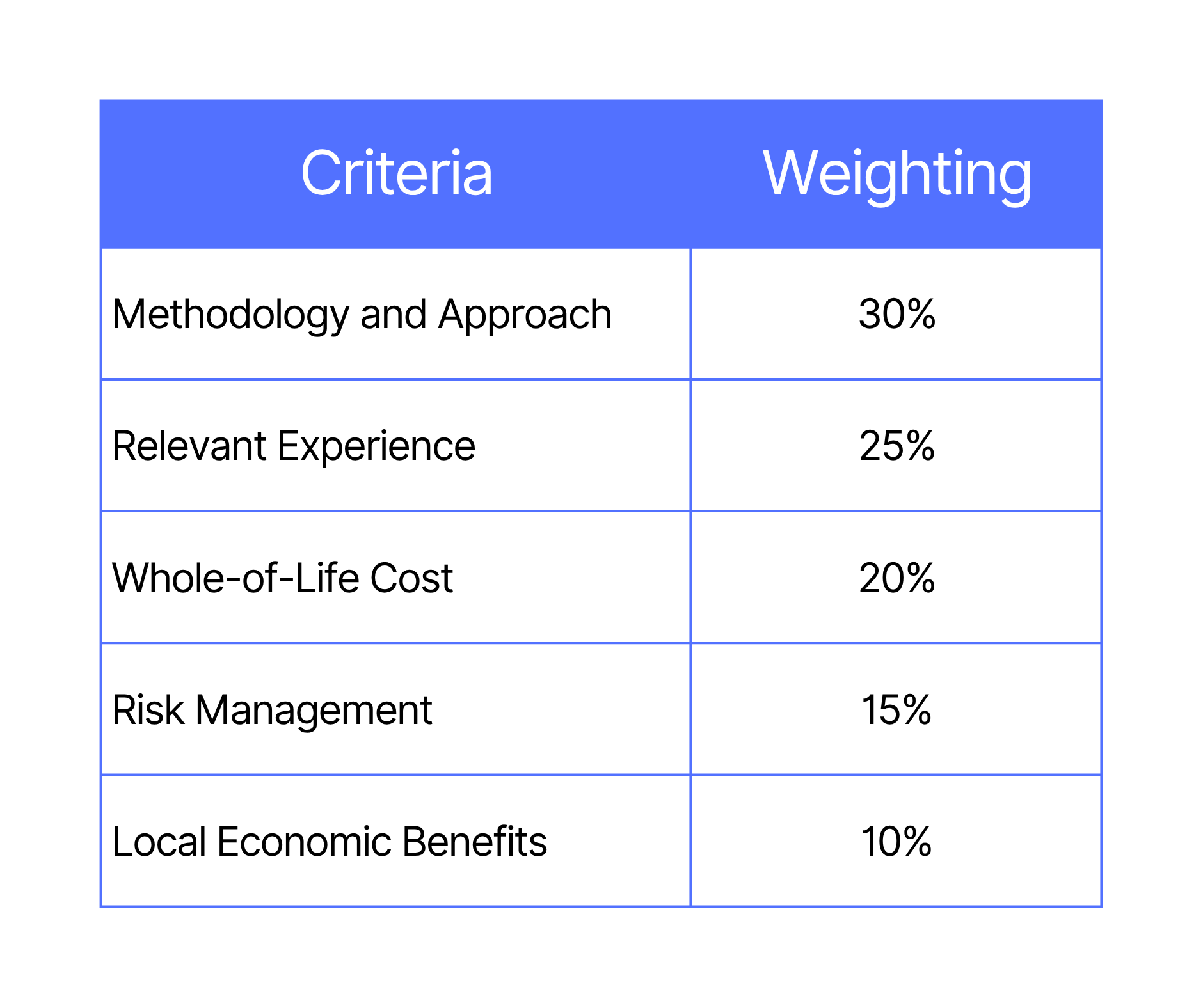

Australian SMEs chasing government contracts often pour hours into tender responses - only to find they’ve scored a 6 instead of a 9. This isn’t because they lack capability. It’s usually because they don’t understand how tenders are evaluated and scored.
Government tenders are not about who “looks best on paper.” They are about meeting clear criteria and demonstrating value. The better you understand the system, the better your chances of winning.
No matter the jurisdiction, evaluation criteria generally fall into three categories:
1. Mandatory Criteria (Pass/Fail)
Mandatory criteria are minimum requirements you must meet to progress. They’re non-negotiable. If you fail even one, your bid may be ruled out immediately.
Examples include:
Tip: Read tender documents thoroughly and prepare a checklist to ensure you meet every mandatory requirement before investing time in your response.
2. Weighted Criteria (Scored and Ranked)
These criteria carry specific scores and influence your overall ranking. Government buyers assign weightings, usually percentages, to different aspects of your offer to reflect what matters most in the procurement. Common weighted criteria include:
Each is scored on a scale, typically 0 to 5, or 0 to 10, then multiplied by the assigned weighting to calculate your score.
Example from a typical tender:

Tip: A strong methodology can outweigh a slightly higher price if it carries the highest weighting. Focus your effort proportionally. The higher the weighting, the more effort and detail your response should include.
3. Non-Weighted Criteria (Reviewed but Not Scored)
These criteria don’t typically receive a numeric score but still influence how evaluators perceive your proposal. They’re often used for due diligence or assessing potential risks.
Examples include:
Tip: Non-weighted criteria can tip the scales in close decisions, even though they aren’t scored directly. Don’t treat these as afterthoughts. Strong non-weighted responses reassure evaluators and help differentiate you from competitors.
Government evaluators use rubrics, not gut instinct.
Typical Scoring Scale (0–10):
Example:
1. Weighted Price Scoring
Lowest bidder usually scores highest, others reduced proportionally.
2. Whole-of-Life Costing
Covers training, maintenance, renewals, disposal. Cheapest upfront is rarely cheapest overall.
3. Value for Money (VFM)
Formula: Total Cost ÷ Quality Score. A higher quality score can offset a higher price.
4. Non-Weighted Price Review
Sometimes used only to check reasonableness, not score.
Tip: Don’t just undercut. Show you’ve priced sustainably and realistically.
Scenario:
Supplier A often wins - quality beats price. Weighted vs. Non-Weighted Scoring. Know the Difference.
Q: What’s the #1 factor in tender scoring?
Weighted criteria (methodology, price, experience).
Q: Why don’t cheapest tenders win?
Governments value quality, risk reduction, and sustainability more.
Q: How can SMEs improve scores?
Tailor every response, provide evidence, and align with criteria weightings.
Winning government tenders isn’t just about being good at what you do. It’s about knowing how your offer will be evaluated and writing in a way that scores points.
SMEs that study the scoring systems, tailor their responses, and prove every claim with evidence stand a far better chance of moving from “thanks but no thanks” to “contract awarded.”



TenderPilot helps SMEs win more government tenders, faster, smarter, and without costly consultants or endless guesswork.